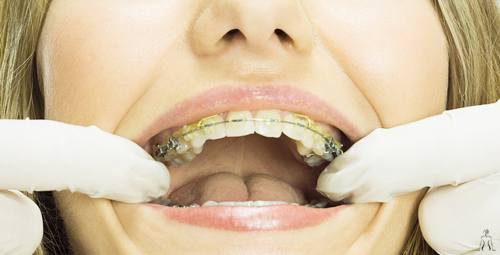
Orthodontics is useful in cases of dental deformities. It corrects these defects, restores the beauty of the jaw and harmonizes the smile.
Procedure
Teeth improperly positioned can be responsible for tooth decay and gum disease. Orthodontics is a procedure that helps get rid of these issues. Its purpose is to correct the general appearance of teeth and improve their position.
Orthodontics and Orthopaedics
When orthodontics only involves the modification of teeth in order to give them a new shape, the doctor may require the wearing of wire and braces to align them.
If the procedure is intended to correct a problem or the size of the jaw, the doctor will instead perform an orthopedic procedure. During this process, he may recommend the wearing of corrective devices to modify jaws’ proportions. Generally, this procedure is carried out during childhood and adolescence, although it is not excluded that it may be carried out in adulthood. Jaw surgery may also be considered if the jaws are severely deformed.
Moreover, even though orthopedic devices are effective in correcting major dental deformities, they do not necessarily align teeth. Therefore, orthodontic treatment can be associated to obtain effective results.
Orthodontics devices
Depending on their use, there are different types of orthodontics devices:
- The fixed orthodontic brace: it looks like the removable brace. The difference resides in the fixation method. This one is directly glued to the tooth and cannot be removed from the mouth.
- Removable orthodontic device: this one is equipped with screws on the lower jaw, upper jaw or both jaws of the tooth. Unlike the fixed brace, it is not glued to the teeth and can easily be removed.
- Space maintainer: it looks like a removable orthodontic device, the only difference being that it has no screws.
- The enclosure system lingual: this is a brand new technology that consists of fixing the braces on the back of the teeth so that they are not visible.
- Enclosure system and braces: this includes a metal wire that the dentist aligns on all teeth, and cases are fixed on the front of the teeth.
- Lingual wire: it is generally used after orthodontic treatment. The lingual floss is attached to the back of the tooth to help the teeth maintain their positions.
- Invisible orthodontics: this is a new technology used to align teeth with transparent trays. However, they require constant change, every 2 or 3 weeks.
Orthodontic Treatment
The duration of treatment and intervention depends on the patient, his ability to follow instructions, his dental health and the severity of the deformities.
However, orthopedic devices are generally placed for a period of 6 to 12 months, while the duration of orthodontic treatment can range from 1 to 3 years.
Orthodontics and patient’s age
The success of orthodontic treatment does not take into consideration the patient’s age. Indeed, it is as effective on children as on adults and both can benefit from a successful procedure in the correction of dental deformities. However, the difference can be established in terms of the duration of the treatment.
The duration of the treatment is shorter for children because their jaws are still growing. Adults may also need jaw surgery in conjunction.
Postop treatment
The orthodontist or dentist ensures that teeth are properly aligned as soon as the braces are removed. He recommends the wearing of a space maintainer, which must be worn for a minimum of 6 months to 1 year period until the gums and bones are positioned adapted to the change.
Example
